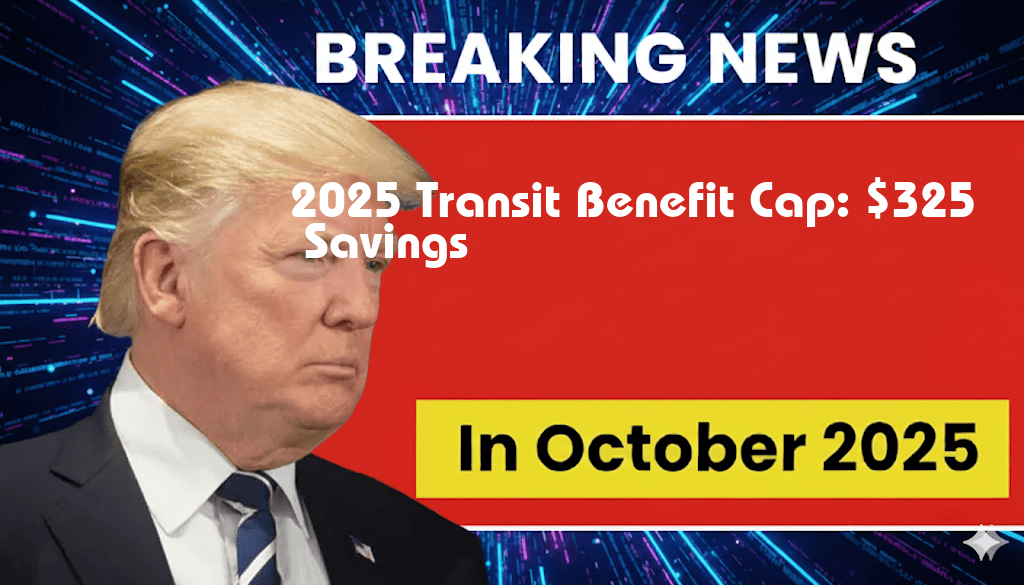

In a move aimed at enhancing public transportation accessibility, the Internal Revenue Service (IRS) has announced that the 2025 transit benefit cap will be set at $325 per month. This increase, which reflects adjustments for inflation and the rising costs of commuting, will significantly impact employees who utilize public transit as a means of travel to and from work. Employers can now offer this benefit to help offset commuting costs, making it a more attractive option for workers. As urban areas continue to grapple with congestion and environmental concerns, the expanded transit benefit supports both individual savings and broader sustainability efforts.
Understanding the Transit Benefit Program
The transit benefit program allows employees to set aside pre-tax dollars to cover commuting costs, including public transit fares. This initiative not only provides financial relief for workers but also encourages the use of public transportation, which contributes to reduced traffic congestion and lower carbon emissions. With the new cap, employees can save a significant amount annually, further incentivizing the adoption of public transit.
Details of the 2025 Increase
- New Monthly Cap: $325
- Effective Date: January 1, 2025
- Previous Cap: $300 per month
Potential Savings for Commuters
The adjustment in the transit benefit cap means significant savings for commuters using public transportation. For employees utilizing the maximum benefit, this translates to annual savings of up to $3,900. The table below illustrates the potential savings based on different commuting expenses:
| Monthly Transit Cost | Annual Cost | Tax Savings (Assuming 25% Tax Rate) |
|---|---|---|
| $200 | $2,400 | $600 |
| $300 | $3,600 | $900 |
| $325 | $3,900 | $975 |
How Employers Can Implement the Benefit
Employers interested in offering the transit benefit can easily integrate it into their existing payroll systems. By allowing employees to allocate pre-tax income for their commuting costs, companies not only enhance employee satisfaction but also benefit from payroll tax savings. Implementing this program can be straightforward:
- Consult Payroll Providers: Work with payroll services to set up pre-tax deductions.
- Communicate Benefits: Inform employees about the available benefits and how to enroll.
- Monitor Engagement: Track employee participation and adjust offerings as needed.
Impact on Public Transportation
The increase in the transit benefit cap is expected to positively impact public transportation systems. By incentivizing employees to use transit options, cities may see an increase in ridership, leading to improved funding and services for public transport. As more commuters opt for buses, trains, and subways, there is potential for reduced wear and tear on roadways, contributing to better overall infrastructure.
Public Response and Future Outlook
Public response to the transit benefit cap increase has been largely positive, with many advocates highlighting the importance of supporting sustainable commuting options. As cities continue to prioritize environmental initiatives, programs like the transit benefit play a crucial role in shaping urban commuting habits. Looking ahead, further adjustments to these benefits may be necessary as inflation and transportation costs continue to evolve.
For more information on transit benefits and related policies, visit the Wikipedia page on transportation benefits or the Forbes article on transit benefits.
Frequently Asked Questions
What is the new transit benefit cap for 2025?
The new transit benefit cap for 2025 is set at $325 per month, providing commuters with significant savings on their transportation costs.
How can I take advantage of the transit benefit?
You can take advantage of the transit benefit by enrolling in your employer’s commuter benefits program, which allows you to set aside pre-tax dollars to cover eligible transit expenses.
What types of expenses can be covered under the transit benefit?
The transit benefit can cover various expenses, including bus fares, train passes, and other public transit costs that qualify under the program.
Will the transit benefit cap increase in future years?
While the transit benefit cap is set for 2025 at $325, future adjustments may occur based on inflation or legislative changes, but no specific increases have been announced at this time.
How does the transit benefit help with overall commuting costs?
The transit benefit helps reduce overall commuting costs by allowing employees to use pre-tax dollars for transit expenses, effectively lowering their taxable income and increasing their monthly savings.





